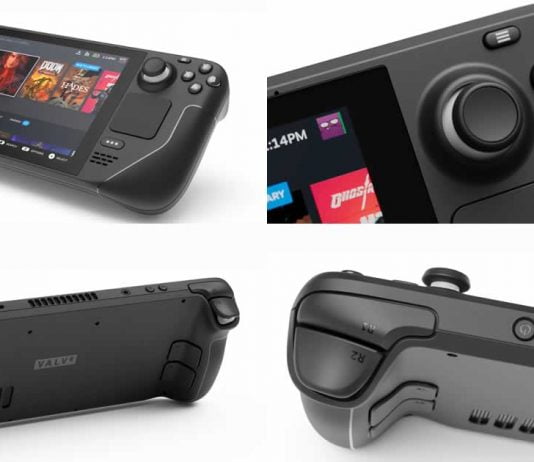Valve’s Steam Deck handheld console has proven to be a hit among gamers since its launch, thanks to a range of hardware and software optimizations that have made it a standout in the market.
The Proton compatibility layer, in particular, has allowed the successful playing of Windows games on Linux. Recent updates have further increased the number of fully compatible games to over 2,500, with twice as many being playable on the console.
Despite its success, Valve is not resting on its laurels and is constantly working to improve the Steam Deck. In a recent interview with The Verge, developers Lawrence Yang and Pierre-Loup Griffais discussed some areas they focus on in future updates.
One of the main areas of focus is the battery, which has recently undergone some optimizations. While the battery is glued in place, making it more difficult to replace than other components, the new revisions of the Steam Deck have applied the glue in a different way to make it easier to detach.
Another area that Yang and Griffais are looking at is the display, with the possibility of incorporating an OLED display to improve picture quality. This is based on customer feedback and test reports indicating that upgrades in this area are often requested.
While there are no plans for significant improvements to the hardware, the developers are focusing on software features for future updates. Yang and Griffais indicated that most of their efforts are currently being directed towards the software side to continue to improve the overall user experience on the Steam Deck.
Despite its popularity, the Steam Deck is still far behind the Nintendo Switch in terms of sales. While the one million unit mark was reportedly broken in October, the Switch has sold over 140 million units. However, Yang and Griffais are not concerned about the sales figures, stating that the efficiency of the AMD SoC specifically developed for the Steam Deck is so good that commercially available notebook components may not reach it. They also mentioned that keeping the performance constant offers other advantages, such as allowing customers to easily assess the performance they are getting and allowing developers to better adapt their games to the Steam Deck during development.
In terms of future development, Yang and Griffais stated that the focus would be on the Steam Deck, but they are open to collaborating with third parties on the project. They also mentioned that while they would like to continue working on the Steam Box and the Steam Controller, there are currently insufficient resources to pursue these projects in parallel.
Overall, it’s clear that Valve is committed to continuously improving the Steam Deck and providing a top-notch gaming experience for its users. With a focus on the battery, display, and software, and the possibility of collaboration with third parties, the future looks bright for the Steam Deck.


